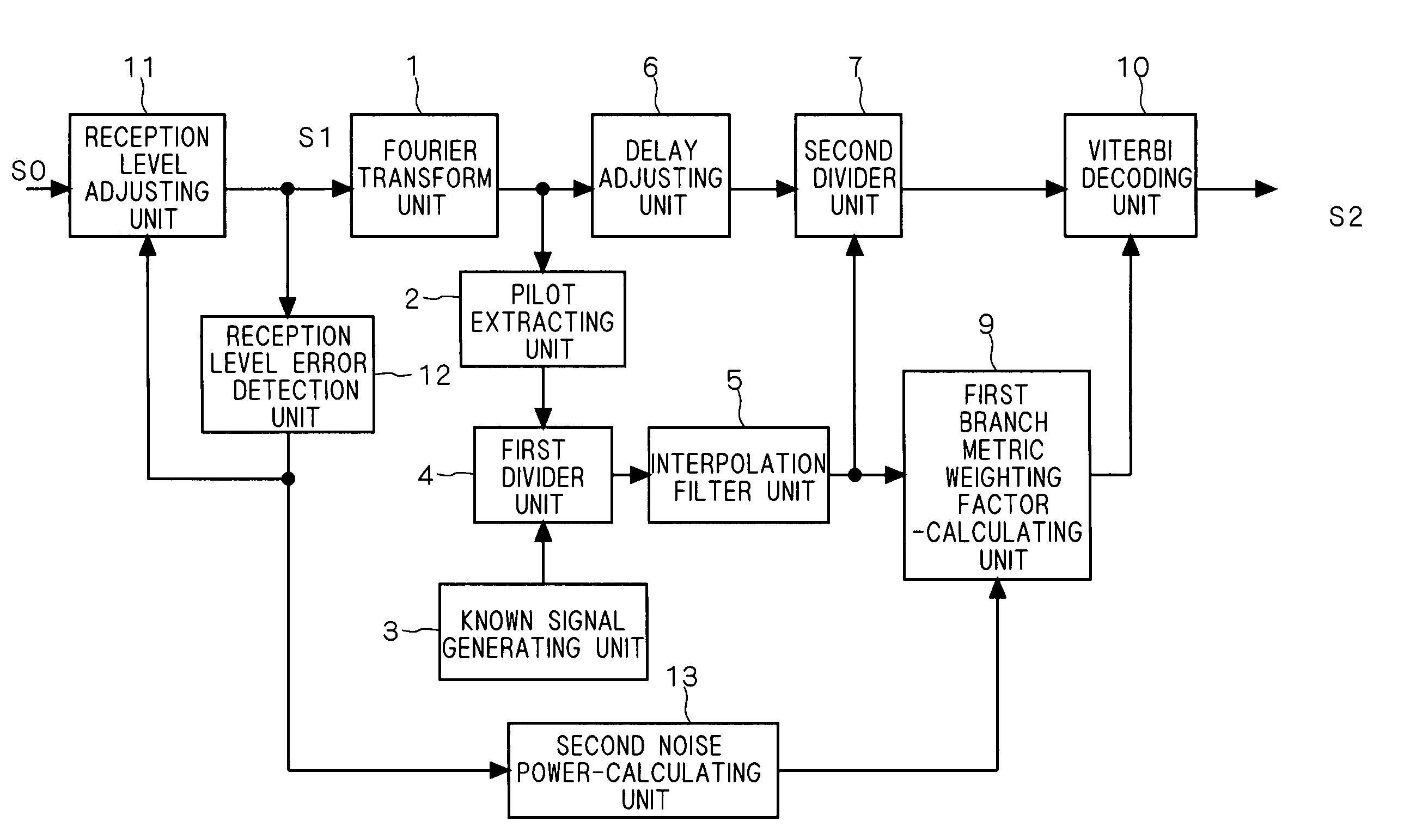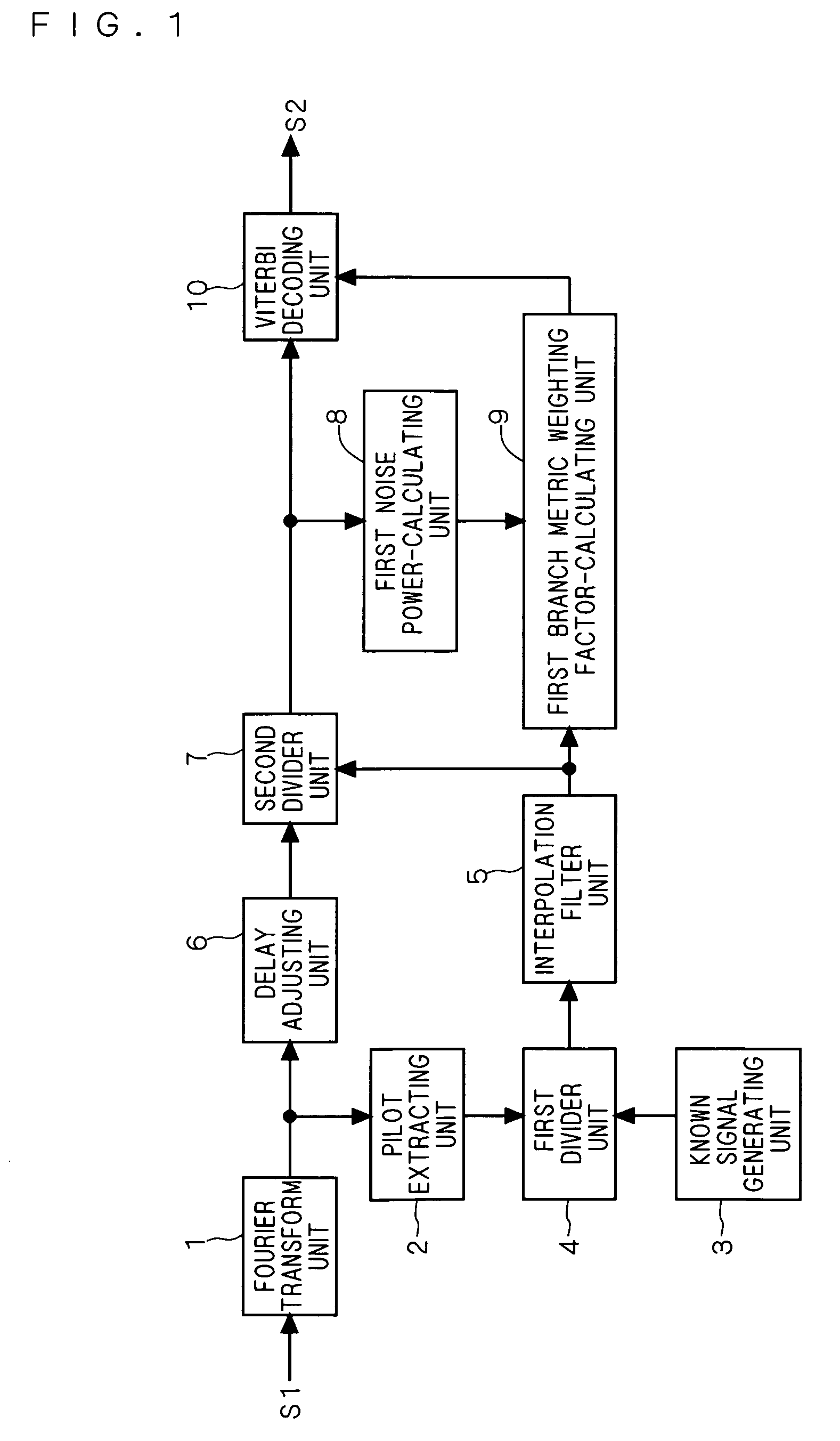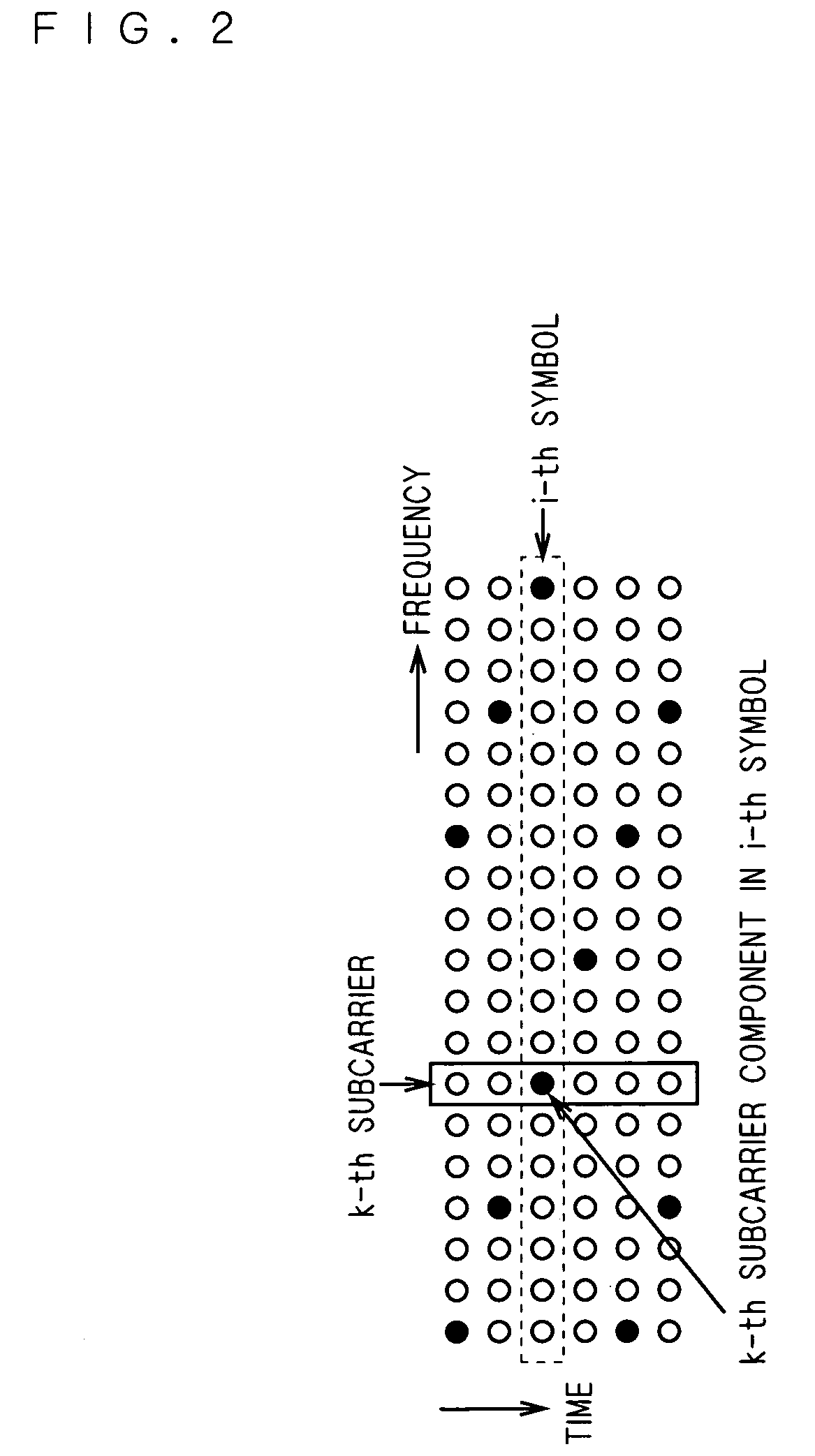OFDM signal receiver device and OFDM signal receiving method
a receiver device and signal technology, applied in the direction of synchronising signal speed/phase control, code conversion, coding, etc., can solve the problem that the error rate corresponding to the signal after demodulating the demodulated signal cannot be sufficiently small, and the average noise power or signal-to-noise power ratio also varies over time, so as to reduce the adverse effects of change over tim
- Summary
- Abstract
- Description
- Claims
- Application Information
AI Technical Summary
Benefits of technology
Problems solved by technology
Method used
Image
Examples
first preferred embodiment
[0023]First, the transmission technology of orthogonal frequency division multiplexing system is explained. The orthogonal frequency division multiplexing system is a transmission system that uses a plurality of carrier waves (hereinafter also referred to as “subcarrier components”) the frequencies of which are orthogonal to each other to transmit transmission data, and the transmission data are reproduced with a receiver device. This first preferred embodiment explains a case in which convolutionally coded transmission data are transmitted and received according to the orthogonal frequency division multiplexing format. In this case, in a transmission device, transmission data that are convolutionally coded at a predetermined coding rate are assigned a signal constellation according to the modulation format of each subcarrier component. Specifically, the transmission data are subjected to an inverse Fourier transform to generate a signal in which a plurality of subcarrier components...
second preferred embodiment
[0038]The receiver device in the first preferred embodiment generates a noise power signal based on a demodulated pilot signal, and calculates a weighting factor for a branch metric based on the resultant noise power signal. A receiver device in the present preferred embodiment generates a noise power signal from an input level of a received signal, and calculates a weighting factor for a branch metric based on the resultant noise power signal.
[0039]FIG. 7 shows a configuration diagram of the receiver device according to the present preferred embodiment. The receiver device shown in FIG. 7 employs: a Fourier transform unit 1, a pilot extracting unit 2, a known signal generating unit 3, a first divider unit 4, an interpolation filter unit 5, a delay adjusting unit 6, a second divider unit 7, a first branch metric weighting factor-calculating unit 9, and a Viterbi decoding unit 10; and these components have the same functions as those in the first preferred embodiment. For that reason...
third preferred embodiment
[0044]The receiver device in the first preferred embodiment calculates a weighting factor for a branch metric by calculating the transmission channel characteristic power information of each subcarrier component from the output of the interpolation filter 5 with the first branch metric weighting factor-calculating unit 9, multiplying this transmission channel characteristic power information by a coefficient according to a noise power signal, and further adding an offset value thereto. The receiver device in present preferred embodiment calculates a weighting factor for a branch metric by performing a signal conversion on the transmission channel characteristic power information using a predetermined function, multiplying the signal that has undergone the conversion by a coefficient according to a noise power signal, and further adding an offset value thereto.
[0045]FIG. 8 shows a configuration diagram of the receiver device according to the present preferred embodiment. The receiver...
PUM
 Login to View More
Login to View More Abstract
Description
Claims
Application Information
 Login to View More
Login to View More - R&D
- Intellectual Property
- Life Sciences
- Materials
- Tech Scout
- Unparalleled Data Quality
- Higher Quality Content
- 60% Fewer Hallucinations
Browse by: Latest US Patents, China's latest patents, Technical Efficacy Thesaurus, Application Domain, Technology Topic, Popular Technical Reports.
© 2025 PatSnap. All rights reserved.Legal|Privacy policy|Modern Slavery Act Transparency Statement|Sitemap|About US| Contact US: help@patsnap.com



